IB Geography Option D Geophysical hazards
1/12
Earn XP
Description and Tags
These flashcards help you learn about Geophysical Hazards for Geography. They include easy-to-understand info on: Volcanic Hazards: Types of volcanoes, lava, ash, and effects like lahars. Earthquakes: How they happen, measuring them, and their effects. Tsunamis: Causes, warning signs, and impact. Landslides: What triggers them and what happens after. Each card has clear points and examples like the Mount St. Helens eruption. Great for quick learning and revision!
Name | Mastery | Learn | Test | Matching | Spaced |
|---|
No study sessions yet.
13 Terms
What are the “layers” of the Earth?
The Earth is made of multiple layers. The first layer is the crust, its thickness varies, continental crust is 20-60km and oceanic crust is 0-5km. Under the crust is flowing but solid mantle that makes up 82% (2900km) of the volume of the Earth. Deeper down is a very dense and very hot core (4640km), its comprised of 2 parts, with the outer core (2200km) being liquid and the inner core (1220km) solid. The layers become more solid the deeper down you go. The density of these layers is controlled by temperature and pressure.
—Page 164 workbook—
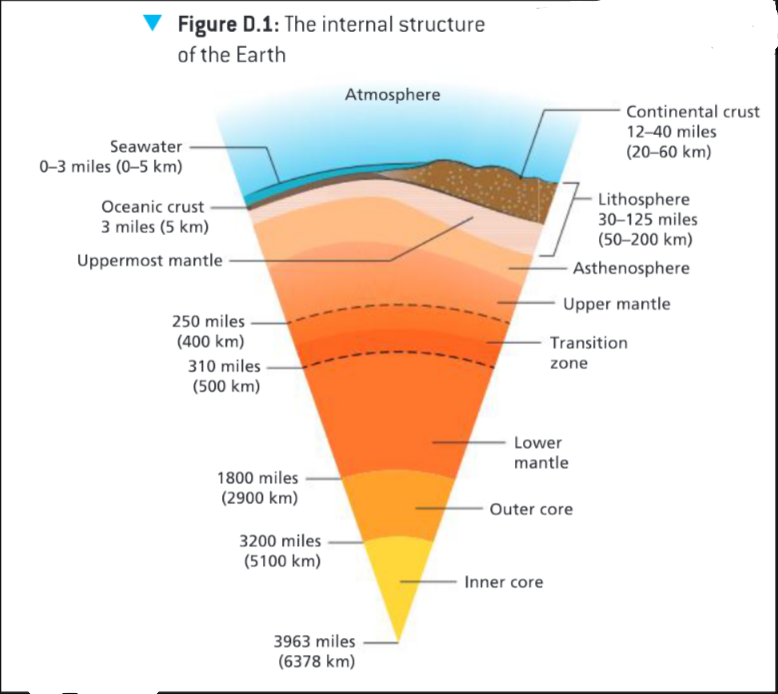
From where does Earth’s heat come from
Radiogenic (that is, radioactive decay of materials in the mantle and the crust) and primordial heat (that is, the heat lost by the Earth as it continues to cool from its original formation).
—Page 164 workbook—
How does convection in the Earth’s mantle work
Process of heat transfer in the Earth's mantle due to temperature differences. Hot material rises, cools, and sinks, creating a continuous circulation pattern. Drives plate tectonics and volcanic activity.
—Page 165 workbook—

What is subduction
Subduction refers to the plunging of one plate beneath another.
Subduction is a geological process where one tectonic plate moves beneath another plate at a convergent boundary. This occurs when one plate is denser than the other, causing it to sink into the Earth's mantle. Subduction zones are associated with volcanic activity and the formation of mountain ranges.
—Page 165 workbook.—

What is a magma plume?
A plume refers to a small area of unusually high heat flow.
A magma plume is a column of molten rock that rises from deep within the Earth's mantle to the surface. It is associated with volcanic activity and can lead to the formation of volcanic hotspots or large igneous provinces. Magma plumes are responsible for the creation of volcanic islands and can cause significant geological changes in the Earth's crust.
The world’s most abundant source of lava, the Hawaiian Hotspot, is not on the plate margin.
—Page 165 workbook—
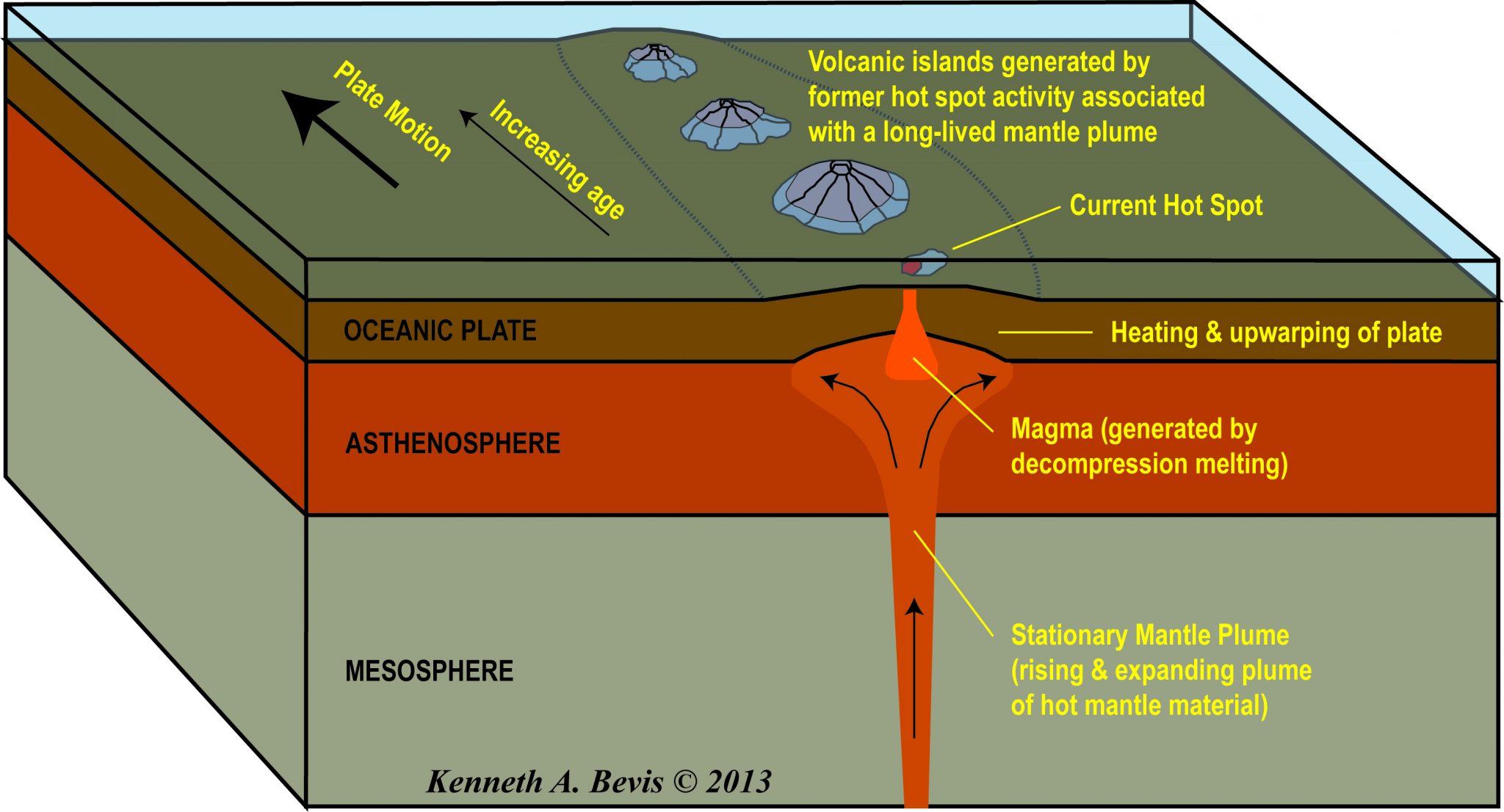
What is Rifting?
Rifting is a geological process where the Earth's crust and lithosphere split apart, creating a rift or gap. This process often occurs in areas where tectonic plates are moving away from each other, leading to the formation of new ocean basins or rift valleys on land. Rifting is a key component of plate tectonics and can result in the formation of volcanoes, earthquakes, and the separation of continents.
—Page 165 workbook—
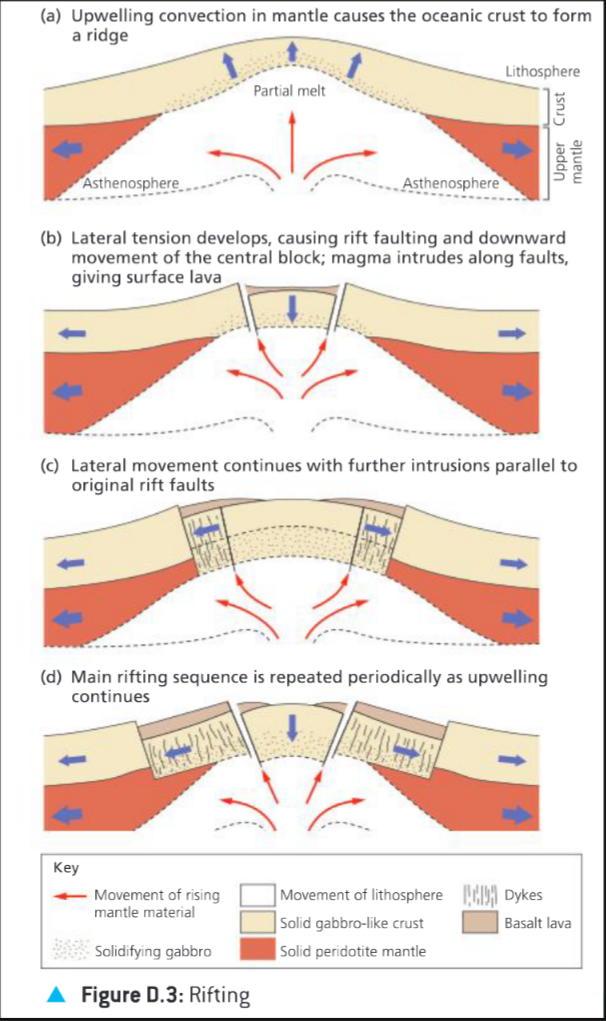
What is a shield volcano?
Shield volcanoes build up when there is no explosive activity, therefore no ejected fragments. Shield volcanoes are formed from very hot, runny basaltic lava. Because it is so hot, the lava can flow great distances. It builds up shield volcanoes, which have gently sloping sides, a shallow crater and a large circumference.
For example Mauna Loa in Hawwai it has a a shallow crater and side with a slope of just 6°. The circumference of Mauna Loa is 16 km the diameter is 110 km at sea level. The summit is 4,171 m above sea level, the total height from its base on the sea floor is 9,750 m, its diameter on the sea floor is 500 km. The volcano is still active and there were many large-scale lava flows during the 20th century.
—Page 166 workbook—
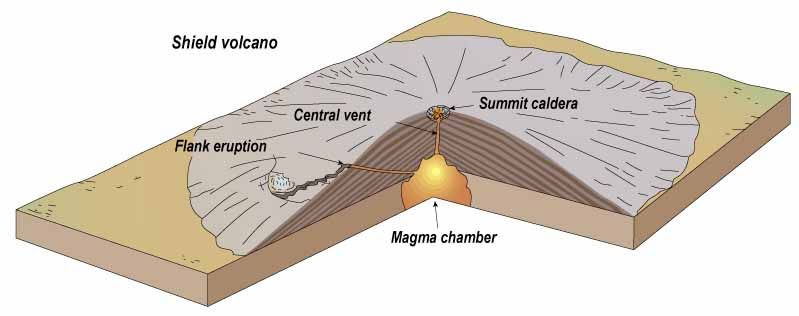
What are Composite/Strato volcanoes?
Composite/Strato volcanoes are the most common type in the world. They are formed by alternating eruptions of fragmental material followed by lava out flows. Characterized by slopes of 3° near the summit and 5° near the base.
The lava found in strato volcanoes is typically andesitic or rhyolitic, which is thick and sticky, causing it to flow slowly and build up pressure before erupting.
The highest volcanoes in the world are of this type, for example Mount Etna and Vesuvius in Italy, Chimborazo and Popacatepetl in Mexico.
—Page 166 workbook—
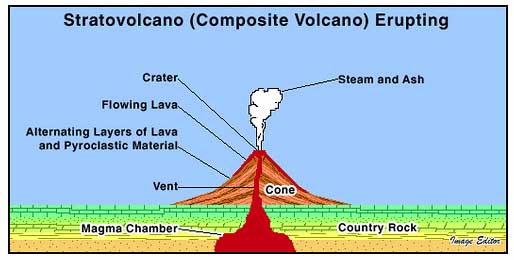
What is a Cinder volcano
Cinder volcanoes are formed by fragments of solid material which accumulate as a steep conical hill around the vent to form a cone.
Its often concave with a steep angle of 30°–40°. Cinder and ash cones are not usually very high (up to 300 m) with the exception Volcano Du Fuego in Guatemala which is 3,350 m and all ash.
The eruptions are violent – lava is ejected into the atmosphere and breaks up into cinders, ash and other fragments.
—Page 166 workbook—
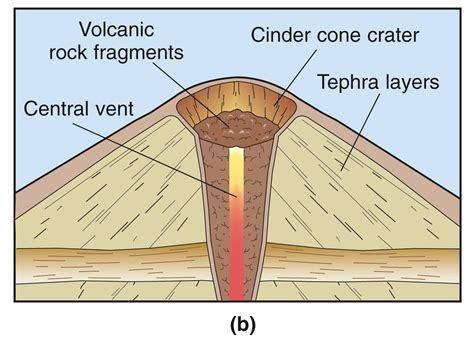
What is a lava eruption
There are a number of different lava eruptions. The silica content in the lava is what makes the difference between: Iceland and Hawaii (which erupt continuously) and those in Japan and the Philippines (where eruptions are infrequent but violent).
—Page 167 workbook—
What is a Pyroclastic eruption?
Strombolian eruptions are explosive eruptions that produce pyroclastic rock.
What is vulnerability
Vulnerability has been described as the characteristics and circumstances of a community, system or asset that make it susceptible to the damaging effects of a hazard.
Risk = Hazard × Exposure × Vulnerability
—Page 186 workbook.—